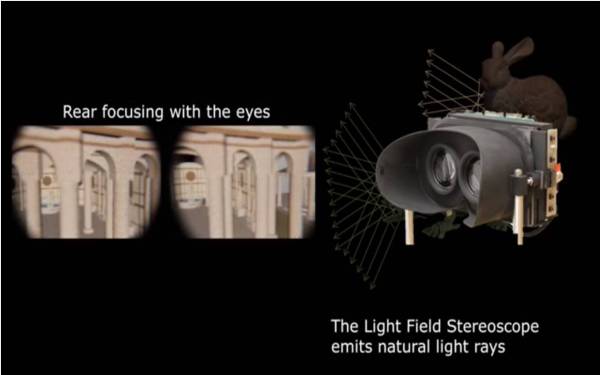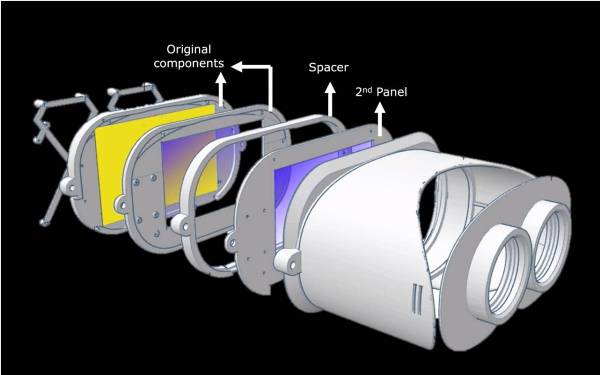Gordon Wetzstein, assistant professor at the Stanford University Computational Imaging Group, and his team have developed a new virtual reality headset prototype they call “a light-field stereoscope”. They promise that their headset decreases motion sickness symptoms which some users experience when using current VR headsets for an extended period of time.
The development aims to eliminate one of the key shortcomings of current binocular headsets, that provide the user with the same standard form of stereoscopy that is used in 3D TVs. Stereoscopic representation only allows the eyes to focus on one plane that is represented by the surface of the display screen. This creates mixed messages for the brain, which in turn may lead to nausea and other symptoms.
 Source: University Stanford
Source: University Stanford
Light field displays are a way to create realistic 3D displays by providing light waves to the viewer that mimic the ones emitted from real objects. In other words, they are aiming at creating a light field that is similar to that coming from real objects. As can be seen in the following images, the user will be able to focus on either part of an object regardless of whether it is in the front or the rear of the field of view.
In this implementation, they are using two separate displays that are placed at different distances from the eye. This arrangement is shown in the image below.
 Source: University Stanford
Source: University Stanford
Since the headset is creating a virtual image, the small distance between the first and second display translates into a much larger distance for the viewer, thus allowing the viewer to focus on different parts of the scene. Since there are only two display planes to focus on, the resulting image is not really a light field display but something in between.
The group at Stanford also mentions that they are working together with Nvidia on this concept. This is particularly interesting as Nvidia has shown a near eye light field display concept in recent years. Even though this concept was based on high resolution panels with attached micro-optical array.
It has to be seen how much a second viewing plane helps viewers to mitigate the vergence issue. – NH

